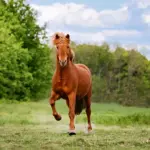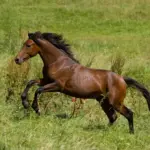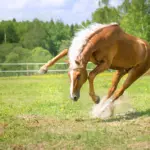Key points at a glance:
- Learned helplessness is a form of depression
- Develops as a result of repeated, uncontrollable negative experiences
- Manifests as seemingly “perfect” or overly compliant behaviour
- Affected horses no longer show any initiative
- The path out of learned helplessness requires time, patience, and positive experiences
What is learned helplessness?
Learned helplessness is a psychological state in which a horse has learned that its own actions and responses have no effect on its situation. Unlike natural flight animals, which actively respond to their environment, these horses fall into a kind of resigned passivity. What some people may mistake for a “well-behaved” or “obedient” horse is, in reality, an animal in a depression-like state.
Slipping into resignation
The development of learned helplessness often occurs gradually. Common triggers include:
- Training under excessive pressure without giving the horse a chance to respond appropriately
- Constant overwhelm with no opportunity to escape or avoid
- Housing conditions that prevent the horse from expressing its natural behaviours
- Chronic pain conditions over which the horse has no control
- Inconsistent cues and unpredictable human reactions
The horse learns: no matter what I do, I cannot change my situation. This realisation first leads to stress and frustration, and later to complete resignation.

© Adobe Stock / vprotastchik
The mask of obedience
What makes it especially tragic is that learned helplessness is often not recognised as a problem. A horse that no longer resists, has no ideas of its own and functions mechanically is frequently praised as a model pupil. He does everything you ask” or “She’s so well-behaved, she’s like a life insurance policy” are typical remarks that disguise the real problem.
The apparent cooperation, however, is not a true partnership but an expression of profound resignation. The horse has given up expressing its own needs or resisting being overwhelmed.
Identifying the signs
Learned helplessness reveals itself in a number of signs:
- Apathetic, “empty” look
- Lack of response to environmental stimuli
- No independent exploration of the surroundings
- Delayed or “mechanical” responses to aids
- Little inclination to play or interact with other horses
- Reduced facial expression and body language
- Apparently “trouble-free” behaviour in all situations
It is especially the last point that often leads to misjudgements. A healthy horse shows reactions appropriate to the situation – at times uncertainty, excitement or even refusal. If these are completely absent, it is not a sign of exceptional obedience but of learned helplessness.
The road back to life
The good news is: learned helplessness is not a one-way street. With plenty of patience and the right approach, affected horses can learn once again to respond actively to their environment.
Step 1: Providing security
The first step is to create a safe, reliable environment. The horse needs to experience that it does not have to fear negative consequences when it shows its own reactions.
Step 2: Allowing self-determination
The horse should be offered situations in which it can make its own choices. This starts with small things, such as choosing between two treats, and extends to free movement and exploration of a new environment.
Step 3: Creating positive experiences
Every independent action by the horse, no matter how small, should be positively reinforced. The horse needs to relearn that its actions can lead to positive outcomes.
Step 4: Patient guidance
The process takes time. Some horses need months or even years to regain their confidence in their own ability to act. Setbacks are normal and no reason for discouragement.
Prevention is the best way
Even more important than recovery is preventing learned helplessness. Horse-friendly training:
- Respects the horse’s natural needs
- Offer clear, consistent signals
- Rewards the smallest effort
- Avoids excessive pressure
- Take individual learning abilities into account
- Allow controlled choices
New perspectives in training
Recognising learned helplessness should inspire us to look at horse training in a new light. A horse that is truly well trained is not the one that just goes along with everything, but the one that:
- Retains its own personality
- Responds appropriately to situations
- Is able to communicate within their own limits
- Works in true partnership with the human
- Shows enjoyment in shared activities
The journey may sometimes be challenging, but it is the only way to achieve a genuine, healthy partnership between horse and human.
- Fact Sheet: Myopathies - 29. August 2025
- Podcast #2 – Weaning Foals: Gentle, Stress-Free and Natural – How to Ensure a Healthy Start into Young Horse Life - 22. August 2025
- Feeding Senior Horses Properly: What Does an Older Horse Need? - 20. August 2025








